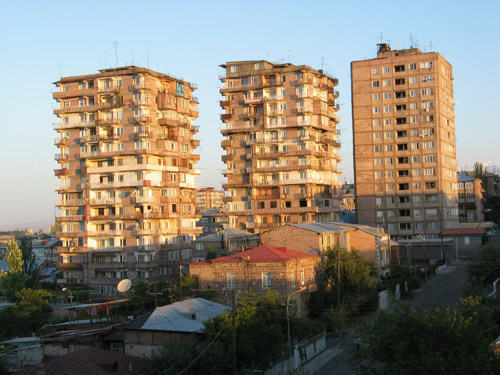- Austria
- Azerbaijan
- Belarus
- Belgium
- Bosnia and Herzegovina
- Bulgaria
- Croatia
- Cyprus
- Czech Republic
- Denmark
- Estonia
- Finland
- France
- Georgia
- Germany
- Greece
- Hungary
- Iceland
- Ireland
- Italy
- Kazakhstan
- Kyrgyz Republic
- Latvia
- Liechtenstein
- Lithuania
- Luxembourg
- Malta
- Netherlands
- Norway
- Poland
- Portugal
- Romania
- Russian Federation
- Serbia
- Slovak Republic
- Slovenia
- Spain
- Sweden
- Switzerland
- Turkey
- Ukraine
- United Kingdom
- Uzbekistan
- Australia and New Zealand
- East Asia and the Pacific
- Latin America and the Caribbean
- Antigua and Barbuda
- Argentina
- Bahamas, The
- Barbados
- Bolivia
- Brazil
- Chile
- Colombia
- Costa Rica
- Dominica
- Dominican Republic
- Ecuador
- El Salvador
- Grenada
- Guatemala
- Guyana
- Haiti
- Honduras
- Jamaica
- Mexico
- Nicaragua
- Panama
- Paraguay
- Peru
- St. Kitts and Nevis
- St. Lucia
- Trinidad and Tobago
- Uruguay
- Venezuela
- Middle East and North Africa
- North America
- South Asia
- Sub-Saharan Africa
Home > Countries > Europe and Central AsiaArmenia
Country Profile

Armenia has a population of 3.3 million and is 64 percent urbanized.[1] The total surface of Armenia’s housing stock equals 88.8 million square meters, of which 53.3 percent is in urban areas as of January 2011[2].
The major players in the housing finance sector are universal commercial banks (90 percent)[3] followed by a few non-bank credit organizations. The typical mortgage product offered is a 10- to 20-year fixed rate mortgage with current annual rates of 12-16 percent in both local and foreign currencies. The Armenian housing finance market is still very small (at the end of 2010 the mortgage loan to GDP ratio approximated 2.9[4]).
Mortgage lending activities in Armenia experienced considerable growth during the 2004-2008 pre-crisis period; these recovered shortly after the crisis. According to statistics of the Central Bank of Armenia (CBA), the national mortgage loan portfolio grew from USD 39.2 million in 2004 to USD 258.1 million in 2008, which represents a 6.5-fold increase. This extraordinary growth was mainly due to growing demand for credit, higher incomes and better terms for credit since 2007.
CBA is closely involved in the reforms of the financial sector, including the housing finance sector, and continually undertakes actions to enhance the sector’s growth and develop market infrastructure. In 1998 KfW[5] Development Bank and CBA entered into a long-term loan agreement as part of the financial cooperation between the governments of the Federal Republic of Germany and the Republic of Armenia. Under the agreement, the German-Armenian Fund (GAF) was created, which in 2006 initiated the Housing Finance Program. The program aims to promote long-term financing by providing long-term resources via refinancing newly originated mortgage loans of financial institutions that follow defined origination, underwriting and servicing standards (established minimum quality standards for mortgage loans). While these long-term funds are low in volume, their availability in the market facilitate long-term lending, since the banks’ deposit base is short-term.
In 2009 the CBA further established a liquidity facility—the National Mortgage Company (NMC). The mission of NMC is to concentrate on the continuous development of the primary market by providing long-term funds to lenders to refinance their housing finance operations. Additionally, NMC should develop the nascent bond market through the issuance of adequate instruments to fund its operations.Normal 0 To accelerate the development of the sector and enable the issuance of mortgage bonds and asset-backed securities in the future, laws “On covered mortgage bonds” and “On asset securitization and asset backed securities” have been enacted in 2008 but have not yet been exercised.
The government of Armenia has implemented different projects in the housing sector. In cooperation with donor organizations it financed scale-house construction in the second-largest city in Armenia, which was most affected by the earthquake in 1988. Also, in 2010 the government launched the targeted program “Affordable houses for the youth” in cooperation with CBA. The program intends to refinance the loans provided to young families by partner financial institutions. The government subsidizes the interest payments of mortgage loans to this group.
In addition, there are several non-governmental organizations operating in the field of housing finance that target vulnerable groups of the population: Habitat for Humanity[6] provides affordable mortgage loans and the Fuller Center for Housing[7] provides long-term interest-free mortgage loans to low-income families to build or renovate homes; the Social Housing Foundation,[8] a non-profit organization of Dutch-Armenian partnership, intends to promote social housing by creating legislation and policies for social housing, and by implementing projects and introducing modern practices in the social housing arena.
[1]The World Bank. World Development Indicators.
[2]http://www.armstat.am/file/article/sv_06_11a_5280.pdf
[3] Central Bank Statistics
[4] Central Bank Statistics
[5] Kreditanstaltfür Wiederaufbau, German government-owned development bank
[6]http://www.habitat.am/
[7]http://fullercenter.org
[8]http://www.shf-armenia.org/About the Editor
 Central Bank of Armenia (CBA)Contact
Central Bank of Armenia (CBA)Contact
WebsiteThe Central Bank of Armenia (CBA) is an independent institution responsible for issuing all banknotes and coins in the country, overseeing and regulating the banking sector and keeping the government's currency reserves. The CBA is also the sole owner of the Armenian Mint.
Copyright © 2026. HOFINET. By using or accessing this website, you signify that you agree to the Terms of Use.
When using or citing any information displayed on this website or accompanying blog sites, you must provide a reference to HOFINET.